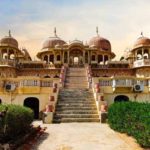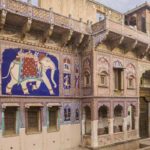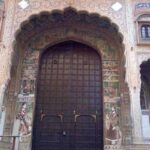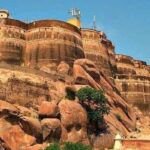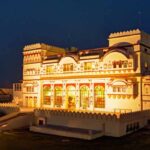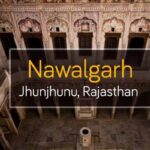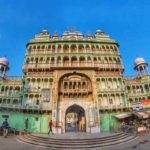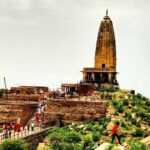Shekhawati Travel Information, located in the northern part of the Indian state of Rajasthan, is a captivating region renowned for its rich cultural heritage and architectural wonders. Spanning over an area of about 13,000 square kilometers, Shekhawati is a treasure trove of history, art, and grandeur. The region’s name is derived from its former ruler, Rao Shekha, and “wati,” meaning region. With its opulent havelis, vibrant frescoes, and colorful markets, Shekhawati is a paradise for history enthusiasts, art lovers, and travelers seeking an offbeat destination.
One of the main attractions of Shekhawati is its stunning havelis, traditional mansions of wealthy merchants adorned with intricate frescoes. These beautifully painted havelis feature a blend of Rajput and Mughal architectural styles, showcasing a unique amalgamation of culture and design. Some of the most famous havelis include the Podar Haveli, Morarka Haveli, and Goenka Double Haveli, each offering a glimpse into the opulence and artistic brilliance of a bygone era.
The towns of Shekhawati are like open-air art galleries, with every street and corner displaying mesmerizing frescoes. Each fresco narrates a different story, ranging from historical events to mythological tales, reflecting the life and times of the people who once inhabited these towns. Exploring the streets of Mandawa, Nawalgarh, and Fatehpur is like stepping back in time, immersing oneself in the grandeur of a glorious past.
Beyond its architectural marvels, Shekhawati also boasts a vibrant cultural tapestry. The region’s traditional folk music, dance, and festivals add a colorful rhythm to the atmosphere. Travelers can witness the exuberant celebrations of Teej, Gangaur, and Diwali, where locals come together to rejoice and share their traditions. For those seeking spiritual solace, Shekhawati offers a host of temples and religious sites. The Rani Sati Temple in Jhunjhunu, dedicated to a legendary Rajput queen, is one of the most revered temples in the region. Additionally, the Khetri Mahal, known as the Wind Palace, and the Khatu Shyamji Temple are also popular attractions.
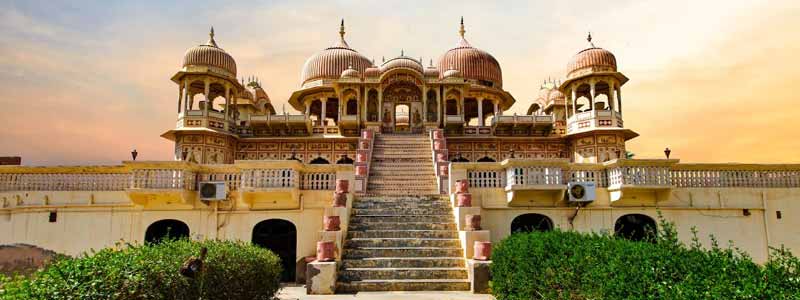
History of Shekhawati
The history of Shekhawati dates back several centuries and is intertwined with the rise and fall of various dynasties, kingdoms, and communities in the northern region of Rajasthan, India.
The Shekhawati region was historically part of the larger region known as the Jangladesh. It was named after its ruler Rao Shekha, who belonged to the Shekhawat Tour clan of Rajputs. In the 15th century, Rao Shekha founded the Shekhawati kingdom, with its capital at Amarsar (now known as Nawalgarh). The Shekhawat Rajputs were known for their valor and played crucial roles in battles and alliances in the region.
During the 18th century, Shekhawati came under the suzerainty of the Jaipur state, which was ruled by the Kachwaha Rajputs. However, the Shekhawat rulers continued to hold significant authority over their respective territories.
One of the key turning points in the history of Shekhawati was the rise of merchant communities during the 18th and 19th centuries. The Marwari community, known for their business acumen and trade expertise, played a pivotal role in transforming the region. The merchants, who primarily engaged in trading activities, accumulated vast wealth and sought to display their affluence through opulent havelis (mansions) adorned with intricate frescoes.
The prosperous merchants commissioned skilled artists to create stunning frescoes on the walls and ceilings of their havelis. These frescoes showcased themes from mythology, folklore, history, daily life, and even scenes from British colonial rule, reflecting the artistic and cultural heritage of the region.
By the early 20th century, Shekhawati had become a thriving cultural and economic hub, with its havelis and grand architecture attracting travelers and traders from various parts of India and beyond. However, with the decline of the traditional merchant class and the advent of modern transportation and communication, Shekhawati’s prominence gradually diminished.
Today, the legacy of Shekhawati’s history is preserved in its awe-inspiring havelis and frescoes, which serve as a living testament to the region’s glorious past. Efforts have been made to conserve and restore these architectural gems to attract tourists and showcase Rajasthan’s rich cultural heritage.
The Shekhawati region continues to enchant travelers with its artistic splendor, colorful traditions, and warm hospitality. It stands as a symbol of Rajasthan’s history, where the valor of Rajput warriors and the prosperity of merchant communities have left an indelible mark on the sands of time.
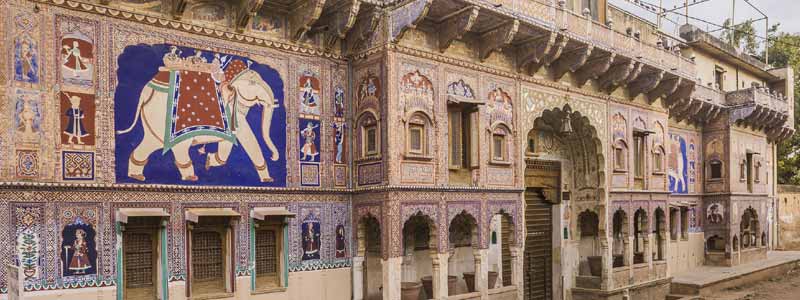
Places to Visit in Shekhawati
Shekhawati, located in the north-eastern part of Rajasthan, India, is a region brimming with historical and cultural treasures. It offers a unique blend of architectural marvels, vibrant frescoes, and a glimpse into the opulent past of the Rajput and Marwari communities. Here are some of the must-visit places in Shekhawati:
Mandawa: One of the most famous towns in Shekhawati, Mandawa is renowned for its stunning havelis adorned with intricate frescoes. The Mandawa Fort, now converted into a heritage hotel, is also a major attraction offering panoramic views of the town.
Nawalgarh: Another prominent town in Shekhawati, Nawalgarh is home to some of the most exquisite havelis, such as the Morarka Haveli and the Poddar Haveli. The Roop Niwas Palace and the Sheesh Mahal are also worth a visit.
Fatehpur: Fatehpur is celebrated for its well-preserved havelis and notable landmarks like the Nadine Le Prince Cultural Centre. The Singhania Haveli Museum and the Kalka Devi Temple are among the other notable places to explore.
Jhunjhunu: The largest town in the Shekhawati region, Jhunjhunu boasts of remarkable architecture and heritage. The Khetri Mahal, Bihariji Temple, and the Rani Sati Temple are some of the key attractions.
Dundlod: Known for its impressive havelis, particularly the Goenka Haveli and the Jagathia Haveli, Dundlod provides a peek into the region’s grandiose past.
Mukundgarh: This picturesque town features elegant havelis like the Kanoria Haveli and the Ganeriwal Haveli. Strolling through its narrow lanes is like stepping into a living museum of art and culture.
Ramgarh: Famous for the Ramgarh Fresco, a massive artwork on the walls of the old Poddar Haveli, Ramgarh is a visual delight for art enthusiasts.
Alsisar: The Alsisar Mahal, a heritage hotel, is a prime attraction here, known for its majestic architecture and luxurious ambiance.
Mahansar: Home to the Sone Chandi ki Dukan (Shop of Gold and Silver), Mahansar is famous for its remarkable paintings and frescoes.
Lachhmangarh: This fortified town is notable for the Lachhmangarh Fort, a splendid example of Rajput architecture.
Khandela: Khandela is renowned for the grand Khandela Fort, which offers a glimpse into the region’s military history.
Balaji: The Khatushyamji Temple in Balaji is a revered Hindu pilgrimage site and attracts devotees from across the country.
Apart from these specific places, exploring the streets and bazaars of various towns in Shekhawati is a delightful experience in itself, as every nook and corner holds hidden gems of art and history. Whether it’s marveling at the stunning frescoes or experiencing the vibrant local culture, Shekhawati promises a journey back in time to Rajasthan’s glorious heritage.
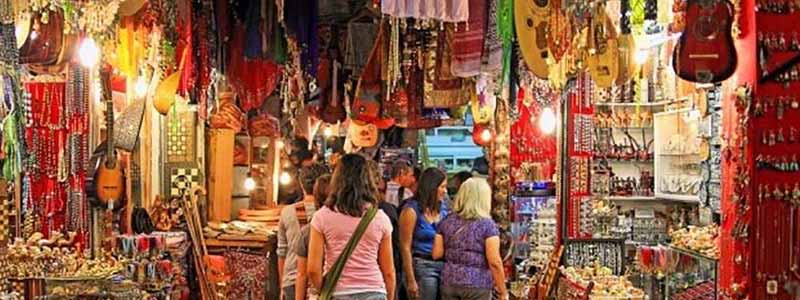
Famous Shopping Markets in Shekhawati
Shekhawati, known for its rich cultural heritage and traditional crafts, offers an array of vibrant shopping markets where visitors can immerse themselves in the region’s artistic and colorful ambiance. These markets are bustling with local handicrafts, textiles, jewelry, and other traditional Rajasthani specialties. Here are some of the famous shopping markets in Shekhawati:
Mandawa Market: Mandawa’s market is a lively place where you can find an assortment of handicrafts, miniature paintings, colorful textiles, and traditional jewelry. The market is also known for its vibrant bazaars during festive occasions.
Nawalgarh Bazaar: Nawalgarh’s market is a treasure trove for art enthusiasts, offering an array of handcrafted items, including pottery, lacquer bangles, and leather goods. You can also find traditional Rajasthani fabrics and clothing here.
Jhunjhunu Market: Jhunjhunu’s market is a vibrant place to shop for souvenirs and local crafts. Look out for beautifully designed quilts, wooden handicrafts, and intricate jewelry.
Fatehpur Market: Fatehpur’s market is known for its lac bangles and textiles. You can find an impressive range of embroidered fabrics, bandhani sarees, and dress materials here.
Ramgarh Market: Ramgarh is famous for its pottery, particularly terracotta pots and clay sculptures. The market offers a great selection of these traditional crafts.
Dundlod Bazaar: Dundlod’s market is a fantastic place to buy traditional Rajasthani jootis (footwear), which come in various designs and colors. You can also find embroidered textiles and wooden handicrafts.
Alsisar Market: Alsisar is renowned for its carpets and durries (traditional rugs). The market also offers colorful textiles and handicrafts that reflect the local artistry.
Khetri Bazaar: Khetri is known for its intricate silver jewelry, especially earrings and anklets. The market is a great place to buy silver artifacts and souvenirs.
Sikar Market: Though not a part of Shekhawati, Sikar, the district headquarters, is nearby and offers an expansive market with a wide range of handicrafts, textiles, and traditional Rajasthani artifacts.
While exploring these markets, be prepared to haggle and bargain as it is a common practice in local markets. Shopping in Shekhawati is not just about acquiring beautiful souvenirs but also about experiencing the region’s rich cultural heritage and supporting local artisans and craftsmen who keep these traditions alive.
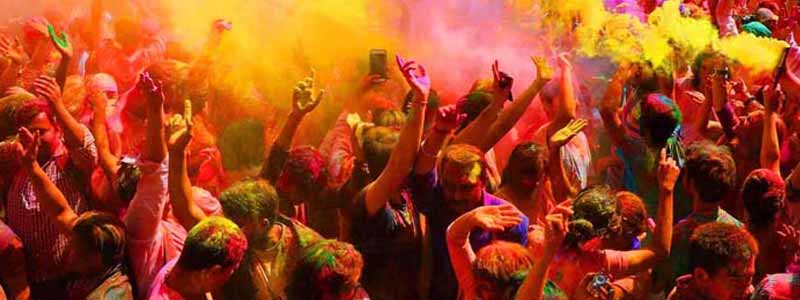
Fair & Festivals of Shekhawati
Shekhawati, a region steeped in cultural heritage and traditions, celebrates a multitude of fairs and festivals throughout the year. These events are vibrant, colorful, and full of life, showcasing the rich cultural tapestry of Rajasthan. Attending these fairs and festivals is an excellent way to experience the local customs, music, dance, and cuisine. Here are some of the major fairs and festivals celebrated in Shekhawati:
Teej: Teej is one of the most important festivals celebrated in Shekhawati, particularly by women. It usually falls during the monsoon season (July-August). Women dress in colorful traditional attire and participate in processions, folk dances like the traditional Ghoomar, and enjoy swings decorated with flowers.
Gangaur: Gangaur is another significant women-centric festival celebrated in March-April. Married women pray for the well-being and longevity of their husbands, while unmarried girls seek blessings for a good husband. The festival includes elaborate processions and the immersion of idols in water.
Diwali: Diwali, the festival of lights, is celebrated with great enthusiasm in Shekhawati. Homes and markets are adorned with oil lamps and colorful rangolis. The festival also involves bursting firecrackers and exchanging sweets and gifts.
Holi: Holi, the festival of colors, is celebrated with gusto in Shekhawati. People come together to play with vibrant colors, sing traditional Holi songs, and indulge in festive delicacies.
Navratri and Dussehra: Navratri, a nine-day festival celebrating the divine feminine, is marked with dance performances like Garba and Dandiya Raas. The festival culminates with the grand celebrations of Dussehra, where effigies of the demon king Ravana are burnt.
Makar Sankranti: Makar Sankranti is celebrated in mid-January, marking the end of the winter solstice. Kite flying is a popular tradition during this festival, and the skies are filled with colorful kites of various shapes and sizes.
Nagaur Fair: The Nagaur Cattle Fair, held annually in January-February, is one of the largest cattle fairs in Rajasthan. It attracts thousands of traders who buy and sell cattle, camels, and horses. The fair is a riot of colors and cultural performances.
Ramdevra Fair: The Ramdevra Fair is held in August-September to honor the saint Ramdevji, a revered folk deity. Devotees from all over Rajasthan and neighboring states gather at the Ramdevra Temple to offer prayers and seek blessings.
Shri Mahavirji Fair: Held in March-April, the Shri Mahavirji Fair is a significant Jain festival dedicated to Lord Mahavir. Devotees flock to the Mahavirji Temple to participate in religious rituals and enjoy the festive atmosphere.
These fairs and festivals provide a unique opportunity to witness the rich cultural heritage of Shekhawati, filled with vibrant colors, traditional music, and age-old customs that have been passed down through generations. It’s an experience that leaves a lasting impression on visitors and adds to the charm of exploring this historical and culturally significant region.
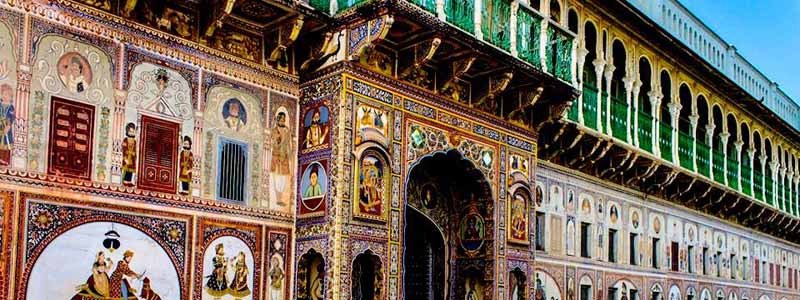
Best Time to Visit Shekhawati
The best time to visit Shekhawati is during the winter months, from October to March, when the weather is pleasant and comfortable. Here’s a breakdown of the seasons and their characteristics to help you plan your visit:
Winter (October to March): This is the peak tourist season in Shekhawati. The weather during these months is relatively cool and enjoyable, with temperatures ranging from 10°C to 25°C (50°F to 77°F). It is the perfect time for exploring the region’s architectural marvels and engaging in outdoor activities. Mornings and evenings can be slightly chilly, so it’s advisable to carry a light jacket or shawl.
Summer (April to June): The summer season in Shekhawati is scorching and dry, with temperatures ranging from 25°C to 45°C (77°F to 113°F). The months of May and June can be particularly hot, making it uncomfortable for outdoor activities and sightseeing. If you plan to visit during this time, make sure to carry sunscreen, a hat, and lightweight, breathable clothing.
Monsoon (July to September): Shekhawati receives moderate rainfall during the monsoon season. While the countryside becomes lush and green, the rain can make transportation and sightseeing a bit challenging. Additionally, humidity levels can be high during this time. If you don’t mind occasional showers and are looking for a quieter and off-season visit, you can plan your trip during the monsoon season.
Considering the pleasant weather and the festive spirit in Shekhawati, the winter months are generally the most preferred time to visit. However, it’s always a good idea to check the weather forecast and plan accordingly. Keep in mind that certain festivals, such as Teej and Diwali, fall during the winter months, adding an extra dose of cultural vibrancy to your visit.
How to Reach Shekhawati
Reaching Shekhawati is relatively convenient, and the region is well-connected by road and rail to major cities in Rajasthan and neighboring states. The main entry points to Shekhawati are through Jaipur and Bikaner. Here are the common ways to reach Shekhawati:
By Air: The nearest airport to Shekhawati is Jaipur International Airport (IATA: JAI), which is well-connected to major Indian cities and some international destinations. After arriving in Jaipur, you can hire a taxi or take a bus to reach various towns in Shekhawati, as it is approximately a 3 to 4-hour drive from Jaipur to most Shekhawati towns.
By Train: The region is connected to the Indian Railways network, and the major railway stations serving Shekhawati are located in Jhunjhunu and Sikar. The Jhunjhunu Railway Station (JJN) and Sikar Junction (SIKR) are well-connected to cities like Delhi, Jaipur, Bikaner, and other parts of Rajasthan. After arriving at these railway stations, you can hire local transport to reach your desired destination within Shekhawati.
By Road: Shekhawati is well-connected by road to major cities in Rajasthan and neighboring states. Several state highways and national highways pass through the region. You can drive to Shekhawati from cities like Jaipur, Bikaner, Delhi, and Jodhpur. Private buses and state-run buses also operate between Shekhawati and these cities, making it a convenient mode of travel for budget travelers.
By Bus: Shekhawati towns are well-connected by a network of state-run and private buses. Various cities in Rajasthan and nearby states have regular bus services to Shekhawati. You can take a bus from Jaipur, Bikaner, Sikar, or other major towns to reach your desired destination within Shekhawati.
Once you reach Shekhawati, local transportation options include auto-rickshaws, cycle-rickshaws, and taxis to explore the towns and their attractions.
It’s essential to plan your journey based on your point of origin and the most convenient mode of transport. Shekhawati’s rich cultural heritage and architectural wonders await travelers, making it a destination worth exploring in Rajasthan.

